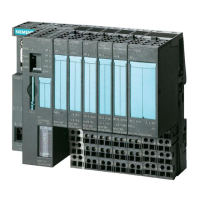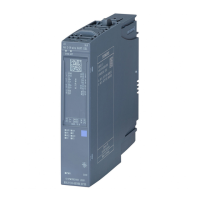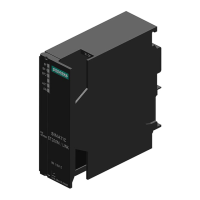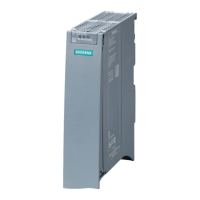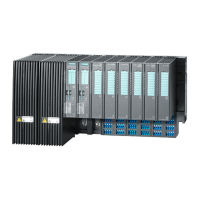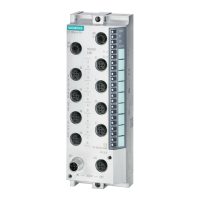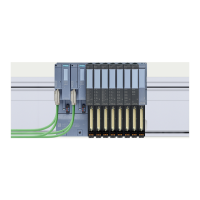Basics of program execution
8.2 Asynchronous instructions
Distributed I/O system
System Manual, 09/2019, A5E03576849-AJ
145
OB priority and runtime behavior
If you have assigned an OB to the event, the OB has the priority of the event. The CPU
supports the priority classes 1 (lowest priority) to 26 (highest priority). The following items are
essential to the processing of an event:
● Calling and processing of the assigned OB
● The update of the process image partition of the assigned OB
The user program processes the OBs exclusively on a priority basis. This means the
program processes the OB with the highest priority first when multiple OB requests occur at
the same time. If an event occurs that has a higher priority than the currently active OB, this
OB is interrupted. The user program processes events of the same priority in order of
occurrence.
Note
Communication
Communication (e.g. test functions with the
PG) always works permanently with the priority
15. So as not to unnecessarily
prolong program runtime in the case of time-critical
applications, these OBs should not be interrupted by communication. Assign a priority >15
for these OBs.
Reference
You can find more information on organization blocks in the STEP 7 online help.
8.2 Asynchronous instructions
Introduction
In program processing, a differentiation is made between synchronous and asynchronous
instructions.
The "synchronous" and "asynchronous" properties relate to the temporal relationship
between the call and execution of the instruction.
The following applies to synchronous instructions: When the call of a synchronous instruction
is ended, the execution is also ended.
This is different in the case of asynchronous instructions: When the call of an asynchronous
instruction is ended, the execution of the asynchronous instruction is not necessarily ended
yet. This means the execution of an asynchronous instruction can extend over multiple calls.
The CPU processes asynchronous instructions in parallel with the cyclic user program.
Asynchronous instructions generate jobs in the CPU for their processing.
Asynchronous instructions are usually instructions for transferring data (data records for
modules, communication data, diagnostics data).
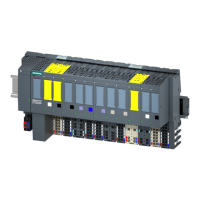
